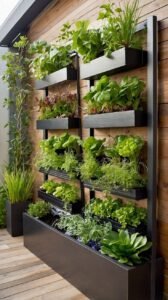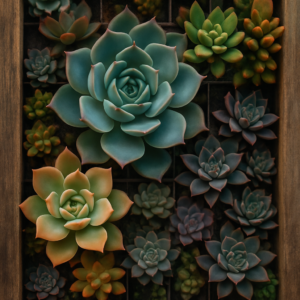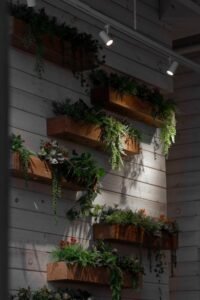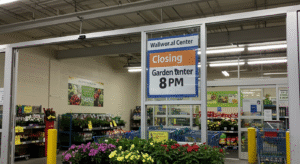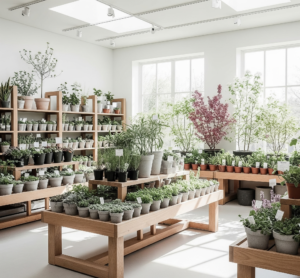Small Apartment Vertical Gardening Advice

vertical garden
Apartment renters with little space for conventional gardening will find vertical gardening to be a convenient and transforming method of growing plants in small areas. Using vertical surfaces like window frames, balconies, and walls, this creative approach lets you grow a range of plants upward instead of outward. Vertical gardening’s increasing appeal especially in cities, can be ascribed to its capacity to conserve space and provide a natural touch to homes. Vertical gardens improve décor by adding vivid vegetation and natural beauty, whether they are a small vegetable garden in a corner, a rich wall of ivy, or even cascading herbs on a kitchen shelf. For small apartment dwellers who want a connection to nature indoors, they also provide the advantage of fresh, homegrown food or flowers without the requirement of a sizable garden.
Advantages of vertical gardening
Particularly in metropolitan homes where space is typically restricted, vertical gardening has many benefits. Its capacity to best utilize space is among the most essential advantages. Using walls, balconies, and other vertical surfaces helps you to grow plants without sacrificing any helpful floor space. This allows one to appreciate a garden even in the smallest of homes. Apart from space efficiency, vertical gardens enhance interior air quality by raising the presence of naturally occurring air filters through the plants. In cities, where pollution rates often are higher, this is especially helpful. Beyond only functional benefits, vertical gardens offer a pleasing look that may change any balcony or area. The natural, calming environment created by the flowing vegetation improves the décor and may help a tiny space seem more open and inviting. The aesthetic benefits of vertical gardening can inspire creativity and a sense of personalization in your living space.
Selecting appropriate plants for vertical gardens
Choosing plants for a vertical garden requires careful consideration of elements, including light needs, plant size, and care requirements. Compact, low-maintenance, and adaptive to indoor settings, plants that fit small apartments will perform best. Because they grow well in small areas and are handy for cooking, herbs such as basil, mint, and thyme are ideal for vertical gardens. Another great option is succulents, which thrive with little water and indirect sun and include aloe vera or echeveria. From wall-mounted planters, climbing plants such as ivy or pothos can cascade elegantly and provide a rich, green impression. For vertical gardening, dwarf crops, including radishes, lettuce, or cherry tomatoes, are also perfect since they provide edible benefits in limited areas. Choose plants that fit your available light circumstances; low-light plants are ideal for shady indoor spaces, and sun-loving species want regions with more direct exposure.
Ideal Vertical Gardening Systems for Apartment Dwellers
Small flats would benefit from several vertical gardening systems, each with unique benefits depending on space, design, and preferred installation technique. Among the most common options are wall planters, usually made with grids or pockets to contain little plants. These systems exploit empty vertical wall space and may be positioned on any wall with enough light, therefore optimizing space. The drawback is that bigger plants might not fit comfortably and that watering might be difficult if the wall is not waterproofed. For climbing plants like ivy, tomatoes, or cucumbers, trellises are ideal. Mounted against windows or on walls, they let plants flourish upward and extend across. For flats with more vertical space, trellises look great, but they could demand more upkeep to guarantee plant health. Renters would benefit much from hanging pots since they are flexible and straightforward to install. Suspended from the ceiling, these pots have a striking design.
Vertical Garden Ideas Made at Home

There are several do-it-yourself projects employing everyday household items if you’re looking for creative vertical garden ideas within a budget. A straightforward approach to establishing a vertical garden with minimal work is with a wooden pallet garden. Just like the back with landscaping fabric, fasten the pallet against a wall, and then pack the pockets with soil and plants. For herbs or small flowers, this arrangement is great; it also gives any area a rustic look. Another excellent do-it-yourself project is hanging shoe racks, which provide several rows of pockets to house plants. Perfect for tiny areas, they can be readily installed on the rear of a door or wall. Just hang the rack, fill the compartments with soil, and select plants such as herbs or little succulents that don’t require deep roots to build this garden.
Retaining Your Vertical Garden
Ensuring the success of your vertical garden depends mostly on proper upkeep. The demands of the plants will guide the changes in watering methods. While most vertical systems need water from the top, they guarantee sufficient absorption free from pooling. One can help efficiently direct water by using a drip irrigation system or a watering can with a small spout. Make sure your vertical garden drains correctly to stop water damage. Many systems include built-in drainage trays or pockets; if not, think about adding a waterproof backing to guard floor or wall surfaces. Regular rotating of plants is another crucial maintenance chore that guarantees enough illumination on all sides. This helps some plants from growing overly weak or leggy. Know typical pests, including mold, aphids, and spider mites. Inspect plants often, remove dead leaves, and steer clear of overwatering to ward against infections.
Suggestions for Final Notes
Small apartment renters looking to bring nature indoors can find a great answer in vertical gardening. It maximizes space, improves décor, and offers the delight of tending to fresh food or plants. Choose a vertical gardening system that best fits your area and aesthetic tastes, and then make sure the chosen plants flourish in your surroundings. Recall that the success of your vertical garden depends on correct maintenance, which includes frequent watering, drainage, and insect control. Don’t hesitate to try several configurations to find the ideal one for you. Any little apartment can become a vivid green refuge with vertical gardening.
